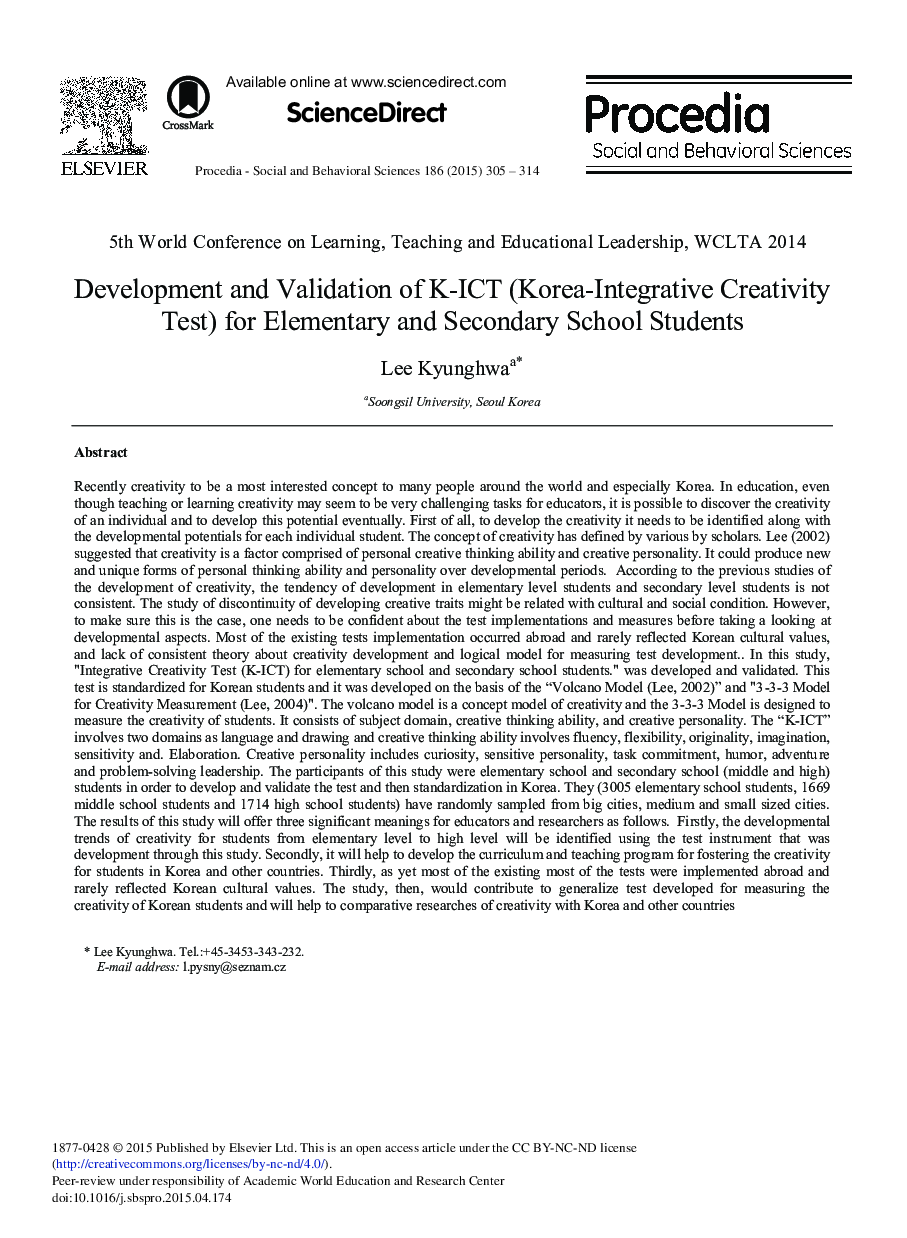| کد مقاله | کد نشریه | سال انتشار | مقاله انگلیسی | نسخه تمام متن |
|---|---|---|---|---|
| 1110462 | 1488373 | 2015 | 10 صفحه PDF | دانلود رایگان |

Recently creativity to be a most interested concept to many people around the world and especially Korea. In education, even though teaching or learning creativity may seem to be very challenging tasks for educators, it is possible to discover the creativity of an individual and to develop this potential eventually. First of all, to develop the creativity it needs to be identified along with the developmental potentials for each individual student. The concept of creativity has defined by various by scholars. Lee (2002), suggested that creativity is a factor comprised of personal creative thinking ability and creative personality. It could produce new and unique forms of personal thinking ability and personality over developmental periods. According to the previous studies of the development of creativity, the tendency of development in elementary level students and secondary level students is not consistent. The study of discontinuity of developing creative traits might be related with cultural and social condition. However, to make sure this is the case, one needs to be confident about the test implementations and measures before taking a looking at developmental aspects. Most of the existing tests implementation occurred abroad and rarely reflected Korean cultural values, and lack of consistent theory about creativity development and logical model for measuring test development. In this study, “Integrative Creativity Test (K-ICT) for elementary school and secondary school students.” was developed and validated. This test is standardized for Korean students and it was developed on the basis of the “Volcano Model (Lee, 2002, )” and “3-3-3 Model for Creativity Measurement (Lee, 2004)”. The volcano model is a concept model of creativity and the 3-3-3 Model is designed to measure the creativity of students. It consists of subject domain, creative thinking ability, and creative personality. The “K-ICT” involves two domains as language and drawing and creative thinking ability involves fluency, flexibility, originality, imagination, sensitivity and. Elaboration. Creative personality includes curiosity, sensitive personality, task commitment, humor, adventure and problem-solving leadership. The participants of this study were elementary school and secondary school (middle and high) students in order to develop and validate the test and then standardization in Korea. They (3005 elementary school students, 1669 middle school students and 1714 high school students) have randomly sampled from big cities, medium and small sized cities. The results of this study will offer three significant meanings for educators and researchers as follows. Firstly, the developmental trends of creativity for students from elementary level to high level will be identified using the test instrument that was development through this study. Secondly, it will help to develop the curriculum and teaching program for fostering the creativity for students in Korea and other countries. Thirdly, as yet most of the existing most of the tests were implemented abroad and rarely reflected Korean cultural values. The study, then, would contribute to generalize test developed for measuring the creativity of Korean students and will help to comparative researches of creativity with Korea and other countries
Journal: Procedia - Social and Behavioral Sciences - Volume 186, 13 May 2015, Pages 305-314